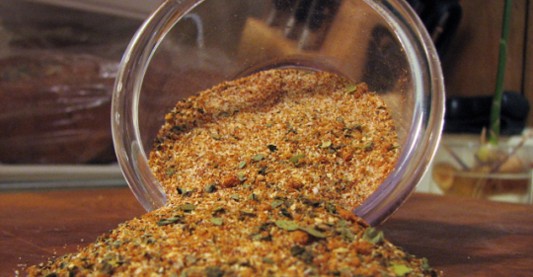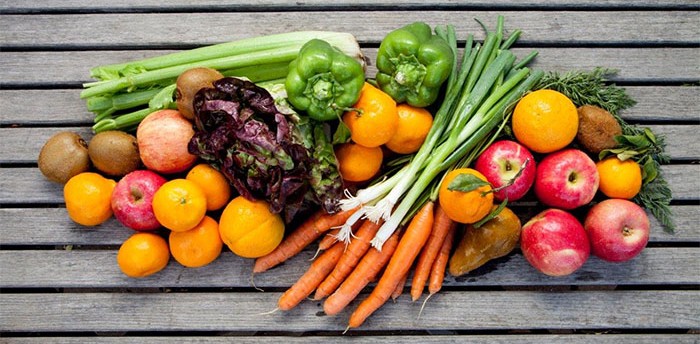There are plenty of variables that come into play when providing a good or a heavenly cut of meat to your food truck customers including the cut of meat, cooking time, wood—but in most cases it comes down to your signature rub.
BBQ rubs are seasonings that help flavor meat, or in other words, rubs add layers to what you’re customers are eating. There are hundreds of rubs on the grocery store shelves for your choosing, but most food truck owners prefer to put their own spin on these ingredients.
If you’ve ever wanted to put your own rub together but didn’t know how to start, we hope this article helps you create your own signature rub for meat, poultry, and even vegetables.
Signature Rub Ingredients:
Salts and Sugars
The first thing to consider with your signature rub is the ratio of salt to sugar. A higher ratio of salt works best in rubs for beef, fish, and wild game, while those with more sugar are better suited for pork.
Salt: Refined, fine grained (included in Big Bob’s secret pork shoulder seasoning)
Kosher salt: Additive-free, coarse grained
Sea salt: From evaporated seawater; usually very fine grained
Seasoned salt: Regular salt combined with flavoring ingredients (e.g., garlic salt, onion salt, celery salt)
White sugar: Highly refined cane or beet sugar; will scorch at hotter temperatures
Brown sugar: White sugar combined with molasses; adds color and flavor to barbecue.
RELATED: Seasoning Your Food Truck Dishes With Herbs And Spices
Pepper
Dry rubs need to be balanced not only in flavor but also in heat. Add ground pepper to the salt-sugar mix in small increments until your ideal blend of heat and flavor is reached. Adding more pepper is always an option, but you can’t remove it, so go slow.
Cayenne pepper: Also called ground red pepper. This hot powder provides instant, or front-end, heat.
White pepper: With a lighter color and a milder flavor, it provides gentle heat and background warmth.
Black pepper: It has a stronger flavor than white or cayenne. Fine- or course-ground, both work great.
Chile pepper: Not to be confused with chili powder. Flavors vary from very hot to mild. Smoked chile powders such as ground chipotle are also widely available.
Transition Spices
Transition spices unite the rub’s sugars, salts, and peppers. These spices are not as dominant as other spices, so they can be added with a heavier hand.
Chili powder: Has a pungent earthy flavor. Use with beef, lamb, pork, and wild game.
Cumin: Aromatic with a nutty, light peppery flavor. Use with beef, poultry, fish, pork, and seafood.
Paprika: Hungarian paprika has a deeper, heartier flavor, while Spanish paprika has a milder flavor. Use with beef, poultry, fish, pork, and seafood.
Signature Flavors
This is the time to stamp your name on your food truck offerings.
Coriander: Use with pork, lamb, poultry and beef.
Dill: Use with chicken and fish.
Garlic powder: Use with pork, beef, lamb, poultry, seafood, and wild game.
Ginger: Use with wild game, fish, seafood, pork, and poultry.
Onion powder: Use with pork, lamb, poultry and beef, seafood, and wild game.
Oregano: Use with lamb, beef, and fish.
Mustard powder: Use with beef, lamb, poultry, pork, and wild game.
Rosemary: Use with fish and poultry.
Thyme: Use with beef, fish, pork, and poultry.
The Process:
- In a large mixing bowl, add your sugars and other dry ingredients.
- Mix the ingredients well by sifting them until they are incorporated.
- Make sure the meat you are using is patted dry and pour the rub on the meat generously.
- Rub the seasoning into the meat so that it covers and coats the meat well.
- Cook the meat your preferred technique (pan fry, BBQ, broiling, etc.)
When it comes to building a signature rub for your food truck, try to remember these tips:
- There is no right or wrong rub if it works for you and your customers. Some might find it odd to add cocoa powder to a rub, but if you feel like it enhances the flavor of what you’re cooking, by all means, have at it.
- If your rub doesn’t come out the way you wanted, but it’s close, we suggest only modifying or changing one item at a time. That way you can better judge the results and identify which flavor needs adjusting.
- Don’t taste test directly from the mixing bowl. Sprinkle it on some meat and cook it first. It will be a completely different flavor than what’s in the bowl.
- WRITE IT DOWN. The number one mistake we’ve found from mobile food vendors is not writing it down as they were experimenting with their rubs. You’ll want to know exactly how much of each spice you used so you can either learn from your mistakes or repeat your victories.
Once you’ve identified the perfect mix of seasonings for your rub feel free to share it with us! Also, if you have any questions about this process or you need recommendations, feel free to ask us privately via email or publicly in the comment section, our food truck forum or through social media. Facebook | Twitter




